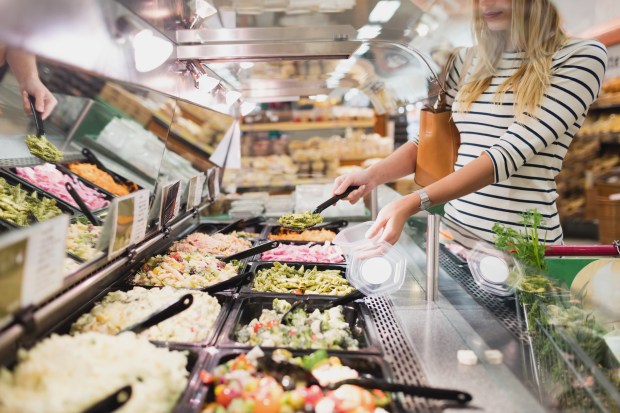Grocerants Take A Bite Out Of Online Grocery And Fast Casual Dining

Grocery shopping? Nah, just order it online.
This is not the predominant attitude among consumers (yet), but it is growing. What can’t people order from their smartphones these days?
For many grocery stores, that’s not a rhetorical question, and to bring consumers through brick-and-mortar doors, these establishments are stepping up to offer something customers can’t get on their phones: a dine-in experience. Yes, like at a restaurant, but at a grocery store instead.
They’re called “grocerants,” a portmanteau of “grocery store” and “restaurant,” and they’re serving up nothing if not efficiency: do the shopping and eat dinner in the same place. Added bonus? Everyone knows it’s a bad idea to shop while hungry, and now, you don’t have to.
The NPD Group found that grocerants generated 2.4 billion new visits and more than $10 billion in sales in 2016. The novelty factor likely plays a role in the popularity of this new hybrid model, as does the popular perception that grab-and-go food products are healthier than restaurant meals.
Essentially, the idea of a grocerant is to sell prepared meals that can either be eaten in the store or taken home. It’s like a meal kit but with even less effort. The target audience? Anyone who is busy. Millennials, families, baby boomers: Any of these groups may find the grocerant appealing.
Like many retail shifts, this one is getting pinned on millennials, and they have certainly had a part to play with their insatiable quest for fresh, healthy products at reasonable prices. They are a generation that would not settle for what grocery stores were offering them. Their love of meal kits has also been critical in pushing grocery stores outside their comfort zones.
Yet this demographic has primarily acted as a trigger: Other generations are also changing their behavior around food. For instance, as baby boomers age, they are attracted to the convenience of a grocerant model, and families with older children enjoy the experience.
The fresh movement started before millennials became a powerful buying demographic — about 20 years ago, according to Forbes, when this generation was still spending its allowance on Tamagotchis, Pogs and Pokémon cards.
It’s no wonder, then, that traditional consumer packaged goods (CPG) brands are not doing fantastic right now. Shoppers gravitate instead to products in refrigerated areas, perceiving these to be freshest and most perishable.
Fast casual brands like Chipotle, Panera and sweetgreen have further challenged grocery stores’ hold on consumer food dollars, spurring the introduction of a dine-in experience to theoretically provide what customers could be getting at a Panera, right in the very store where they need to run their errands. And, of course, as more consumers subscribe to meal kit services like Blue Apron, there is less need for grocery stores at all.
Experience is what it comes down to for much of retail today. The grocerant model is going mainstream after a few years of softly simmering on the back burner. What else could be in the pipeline — and if it’s not already there, what maybe should be in the pipeline?
Progressive Grocer suggests three things: education, occasions and outreach.
Grocers could educate customers on the array of available cuts by hosting a meat-cutting demonstration and introduce them to nomenclature for different types of meat. Plus, most consumers have no idea what kind of spirits pair best with a certain meal; why not teach them in the very venue where they’ll be buying those things?
Another option is to introduce occasions for customers to sample wines or snacks. Wine can be overwhelming for those not in the know, and as far as snacks are concerned, most people just buy what they know. Occasions are an opportunity to educate, expose and upsell.
Finally, if customers aren’t coming to the store, grocers may want to try bringing the store to them through outreach. Food trucks and trailers or mobile smokers are a way to take the show on the road to hook new customers at festivals, fairs and farmers markets.
It’s not enough anymore just to be a store that has things on shelves. If you build it, they may not come. But bring it to them, and they’re bound to give it a try.
